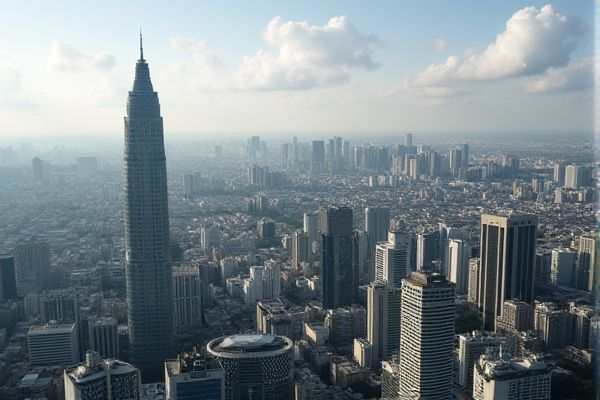
Weather and climate in Thailand: Tropical climate throughout the year. Three main seasons: hot, rainy, cool. Hot season: March to June. Rainy season: July to October. Cool season: November to February. Monsoon impacts weather patterns. Humidity levels can be high. Average temperatures: 25-35degC. Coastal areas experience heavy rains. Air conditioning commonly used.
Tropical climate throughout the year.
Thailand has a tropical climate, characterized by hot and humid conditions year-round, with temperatures often exceeding 40°C during the hottest months and averaging around 28°C throughout the year. The country experiences distinct seasons, including a hot season from March to May, a rainy season from May to October, and a cooler season from November to February. For more detailed insights into the Climate In Thailand, you can explore informative resources available online.
Three main seasons: hot, rainy, cool.
Thailand's climate is characterized by three main seasons: the Hot Season from March to June, marked by high temperatures often reaching 40 degrees Celsius; the Rainy Season from May to October, dominated by the southwest monsoon bringing heavy rainfall; and the Cool Season from November to February, marked by cool, dry air from the northeast monsoon, making it the most comfortable time to visit. For more detailed information about these climate patterns, you can visit the TravelFish website.
Hot season: March to June.
From March to June, Thailand experiences its hot season, characterized by rising temperatures, with average daily temperatures ranging from 30°C to 36°C, and minimal rainfall, especially in the North and Central regions. In contrast, the South remains relatively dry and sunny with temperatures between 26°C and 33°C, making it ideal for beachgoers and sun seekers. For more detailed information on weather patterns during Thailand’s hot season, you can visit Selective Asia. This helps travelers plan their trips accordingly, ensuring they make the most of their visit to this vibrant country.
Rainy season: July to October.
The rainy or 'monsoon' season in Thailand occurs between July and October, characterized by heavy but initially inconsistent rainfall, becoming more persistent towards the end of the period, with high humidity and short bursts of rain. For detailed insights on weather patterns and travel advice during this period, visit the Met Office website. This season is marked by substantial atmospheric changes that influence travel plans and local activities. Understanding these dynamics is essential for anyone planning a trip to Thailand during these months.
Cool season: November to February.
The cool season in Thailand, from November to February, is characterized by cool, dry air brought by the northeast monsoon, with temperatures ranging from 18 to 32 degrees Celsius in Bangkok and cooler temperatures in the north, making it the best time to visit with minimal rainfall and lower humidity. For more detailed weather information and tips on planning your travel, you can visit the Travelfish website.
Monsoon impacts weather patterns.
Thailand's weather is significantly impacted by two monsoon seasons: the south-west monsoon from June to September, which brings heavy rainfall and high humidity to the Andaman Coast, and the north-east monsoon from November to March, which brings cooler temperatures and less rainfall to most of Thailand, except for the Gulf Coast where it can cause significant rainfall between November and January. For more detailed insights, you can explore the effects of the monsoon on Thailand's weather by visiting Thaizer. Understanding these seasonal variations is crucial for travelers and residents alike, as they navigate the climatic shifts throughout the year.
Humidity levels can be high.
In Thailand, particularly in Bangkok, humidity levels are notably high, with an average annual humidity of 73%. The most humid month is September, with an average humidity of 79%, while December is the least humid, at 68%. For more detailed information, you can visit the Weather and Climate website, where you will find comprehensive data and insights into Bangkok's humidity trends throughout the year.
Average temperatures: 25-35°C.
In Thailand, average temperatures often range between 25-35°C, with the cool season from November to February seeing temperatures between 18-32°C, the hot season from March to June averaging around 34°C, and the wet season from July to October averaging around 29°C with high humidity. For more detailed insights on Thailand's Weather, travelers can explore the seasonal variations to plan their visit accordingly.
Coastal areas experience heavy rains.
Coastal areas in southern Thailand, particularly provinces like Chumphon, Surat Thani, and those in the lower South, are experiencing heavy to very heavy rains. This adverse weather is leading to flash floods and landslides, as well as hazardous maritime conditions characterized by strong winds and [high waves](https://crisis24.garda.com/alerts/2024/11/thailand-adverse-weather-forecast-across-much-of-the-country-through-at-least-nov-30-update-1) of up to two to three meters. These challenging conditions continue to pose significant risks to the local communities and travelers in the region.
Air conditioning commonly used.
Air conditioning is widely used in Thailand due to its hot and humid climate, with the market driven by increasing urbanization, rising disposable incomes, and a growing demand for energy-efficient and eco-friendly cooling solutions. The need for advanced cooling systems is particularly significant in the residential, commercial, and industrial sectors. The comprehensive analysis of this trend can be explored further in the Thailand Air Conditioners Market report, which delves into regional developments and consumer preferences.
